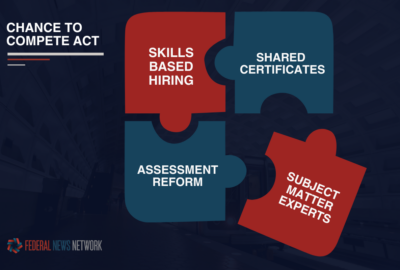New OPM ‘handbook’ details skills-based job qualifications for governmentwide roles
The initiative from OPM aims to help agencies provide consistent messaging about how federal job candidates are chosen, trained and evaluated.
The Office of Personnel Management is offering agencies a new resource to help them focus more on job candidates’ skills rather than their education.
An updated “handbook” from OPM, published Thursday, details various job competencies, across a broad range of governmentwide occupations, that agencies can reference when assessing job applicants.
The handbook is organized at the top level by job category. Within each category, agencies will find a list of skills that OPM has determined are generally needed or useful for employees in different fields. The skills are laid out for various grades in the General Schedule within each job category.
The handbook is part of OPM’s Federal Workforce Competency Initiative (FWCI), an effort that has been underway for at least the last couple of years. The initiative aims to help agencies provide consistent messaging about how candidates are chosen, trained and evaluated.
The update from OPM comes a few years after the agency conducted a governmentwide survey, looking to identify competencies for professional, administrative, technical and clerical occupations, among many others.
OPM initially launched the survey in 2021 to better gauge what skills and competencies the workforce needs to best perform across a variety of federal jobs. The survey asked federal employees and supervisors about the skills they believed were necessary to succeed in their jobs.
Over 90,000 federal employees and supervisors from more than 300 occupational series governmentwide responded to the general competency survey. OPM called their input “crucial.” The survey ultimately gave OPM data on the importance of 32 different competencies across 214 occupational series.
OPM then used the feedback and survey results to develop and update competency models, which it and other agencies can use for workforce planning, training and development, performance management, recruitment and hiring activities.
Notably, even though OPM used the survey feedback to build its own governmentwide hiring assessments, individual agencies can also use that data to develop their own internal assessments.
In the handbook, OPM is largely emphasizing skills-based hiring and assessment reform, two areas that the agency has been focusing on for years.
A similar push is included in the Chance to Compete Act, a still-pending bill that the House cleared at the beginning of 2023.
Skills-based hiring efforts in government are largely bipartisan. OPM’s initiative dovetails with skills-based hiring goals from an executive order in 2020 during the Trump administration that urged agencies to use skills-based assessments — rather than education credentials and written questionnaires — to evaluate and vet job candidates.
The initiative is also in line with the President’s Management Agenda, part of which aims to “build a personnel system to sustain the federal government as a model employer by providing data-driven tools for agency human resources professionals in their workforce planning endeavors,” OPM said.
“OPM will continue to support agencies and collect critical data that strengthens our workforce and enables us to deliver services for the American people,” OPM Director Kiran Ahuja said in a press statement Thursday. “This update to the FWCI will help agencies hire the talent they need and expand opportunities for positions that do not require certain degrees.”
The handbook is an update to many of the general competencies from OPM’s Multipurpose Occupational Systems Analysis Inventory—Closed-Ended (MOSAIC) methodology, which dates back to the 1990s. But many of those reviews are more than a decade old.
The occupational series that OPM included in the new handbook cover a broad range of governmentwide positions. Some of OPM’s new competency models cover positions in the fields of psychology, social work, human resources, financial administration, quality assurance and facility operations — just to name a few.
Many of the competencies that OPM lists overlap among a majority of the positions — including broad skills such as attention to detail, customer service, flexibility and teamwork.
Moving up the GS grades, not surprisingly, the competencies become more specific and more complex.
For example, OPM suggests qualifications like integrity, honesty, interpersonal skills and reading comprehension for many GS-7 positions.
But for GS-13 or GS-14 employees, qualifications can include conflict management, influencing and negotiating, organizational awareness and project management.
Of course, it’s still up to agencies to make the final call when assessing candidates for a job opening in any of these positions. That includes any additional analyses or job responsibilities that fall outside of the more general qualifications that OPM has listed in the handbook.
Additionally, agencies can decide whether to apply the lists of competencies in cases where there is overlap with a different job series but that may not include the full range of work.
Copyright © 2025 Federal News Network. All rights reserved. This website is not intended for users located within the European Economic Area.
Drew Friedman is a workforce, pay and benefits reporter for Federal News Network.
Follow @dfriedmanWFED






